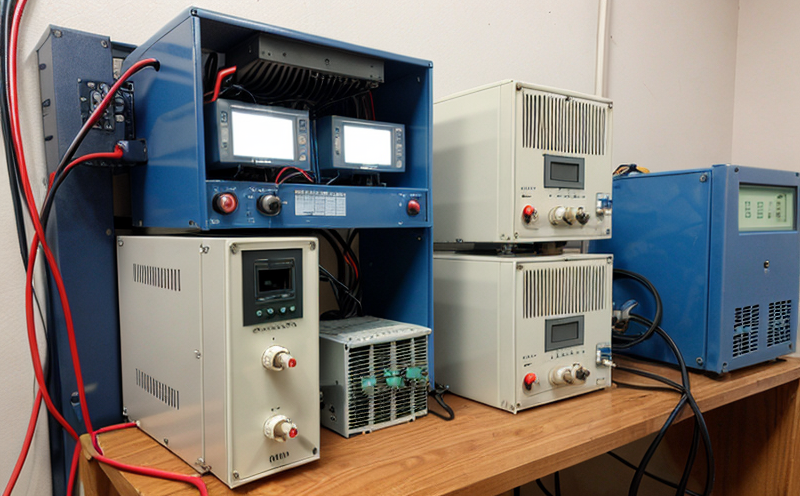IEC 60255 Protection Relay Testing in Railway Networks
The IEC 60255 standard is a critical cornerstone for ensuring the safety and reliability of protection relays used in railway networks. These relays play a pivotal role in safeguarding electrical systems from overcurrents, short circuits, and other faults that can potentially disrupt operations or endanger passengers and staff.
Protection relays are designed to monitor various parameters such as voltage, current, power factor, frequency, and temperature. They are capable of detecting abnormal conditions within railway networks and initiating protective actions, including switching off the supply or tripping circuit breakers. Given the high stakes involved in railway operations, compliance with IEC 60255 is non-negotiable.
The standard specifies detailed requirements for protection relays to ensure they meet stringent performance criteria across a wide range of operating conditions. It encompasses testing procedures aimed at assessing the relay’s accuracy, stability, response time, and overall reliability under specified environmental stressors. Compliance with this standard is crucial for railway operators seeking to adhere to international safety regulations.
Protection relays installed in railway networks must be tested according to IEC 60255 to ensure they meet the following key performance parameters:
- Accuracy: Ensures that the relay accurately measures and responds to specified electrical parameters.
- Stability: Demonstrates the ability of the relay to maintain its accuracy over time under various operating conditions.
- Response Time: Measures how quickly the relay can detect a fault condition and initiate protective action.
- Operating Temperature Range: Verifies that the relay functions correctly within specified environmental temperatures.
- Vibration Durability: Ensures reliability in environments where high levels of mechanical stress are expected, such as in moving railway networks.
- Humidity Resistance: Validates performance in humid conditions to prevent moisture-related failures.
The testing process involves a comprehensive series of steps that include specimen preparation, calibration, and validation. Specimen preparation is crucial for ensuring accurate test results. This includes conditioning the relay under specified environmental conditions before testing begins. Calibration ensures that all measurement devices used in testing are accurate and traceable to international standards.
During the testing process, various types of stressors are applied to simulate real-world operating conditions. For instance, relays are subjected to overcurrent conditions to test their tripping characteristics. Similarly, voltage stability tests are conducted to ensure that the relay maintains accuracy under varying load conditions. Environmental stress tests like temperature cycling and humidity exposure further validate the relay’s performance in diverse environments.
The testing apparatus typically includes high-precision measurement devices, environmental chambers for controlled testing, and specialized software for data analysis. The results of these tests are meticulously recorded and analyzed to ensure compliance with IEC 60255 requirements. Compliance is verified through detailed reports that document the test parameters, specimen preparation, calibration procedures, stressor applications, and final performance metrics.
Compliance with IEC 60255 not only ensures safety but also enhances operational efficiency by minimizing downtime and reducing maintenance costs. Railway operators who adhere to this standard can be confident that their protection relays are reliable and capable of performing critical functions under demanding conditions.
Why It Matters
The importance of IEC 60255 compliance cannot be overstated, especially in the context of railway networks. These systems operate in environments where safety and reliability are paramount. A single failure can lead to significant disruptions, including service interruptions, delays, or even accidents.
IEC 60255 provides a robust framework for ensuring that protection relays meet the highest standards of performance and reliability. By adhering to this standard, railway operators can:
- Enhance safety by minimizing the risk of electrical faults leading to accidents.
- Improve operational efficiency through reliable and responsive relays.
- Elevate reputation among stakeholders by demonstrating commitment to safety standards.
- Ensure compliance with international regulations, thereby facilitating smoother operations across borders.
The standard’s emphasis on accuracy, stability, response time, and environmental durability ensures that protection relays can perform reliably under a wide range of conditions. This reliability is crucial for maintaining the integrity of railway networks and ensuring passenger safety.
Scope and Methodology
The scope of IEC 60255 protection relay testing encompasses a comprehensive set of procedures designed to evaluate various performance parameters. These tests are conducted under controlled laboratory conditions using standardized test setups.
Key aspects of the methodology include:
- Calibration: Ensures that all measurement devices used in testing are accurate and traceable to international standards.
- Environmental Control: Maintains precise control over temperature, humidity, and other environmental factors during testing.
- Stressor Application: Applies various stressors such as overcurrents, voltage variations, and thermal cycling to simulate real-world operating conditions.
The methodology for compliance verification typically involves several steps. These include:
- Initial inspection of the relay to ensure it meets the basic requirements specified in IEC 60255.
- Calibration and adjustment of measurement devices used in testing.
- Application of stressors according to predefined protocols.
- Data collection and analysis to verify compliance with the standard’s performance criteria.
The final step involves generating a detailed report that documents all test parameters, results, and conclusions. This ensures transparency and traceability in the testing process, providing assurance of compliance for regulatory bodies and stakeholders.
Industry Applications
- Railway Substations: Testing relays used in railway substations ensures their reliability in managing power distribution and protection under varying load conditions.
- Rolling Stock: Ensuring that protection relays on rolling stock are compliant helps prevent electrical malfunctions that could lead to breakdowns or accidents.
- Traction Systems: Testing traction system relays ensures they can accurately monitor and protect the power supply, enhancing both safety and efficiency.
- Power Grid Integration: Compliance with IEC 60255 is essential for seamless integration of railway networks into broader power grids, ensuring stability and reliability.
The wide range of applications underscores the critical role that protection relays play in maintaining the integrity and safety of railway systems. Testing these relays according to IEC 60255 ensures they meet the highest standards of performance and reliability across various operational environments.





